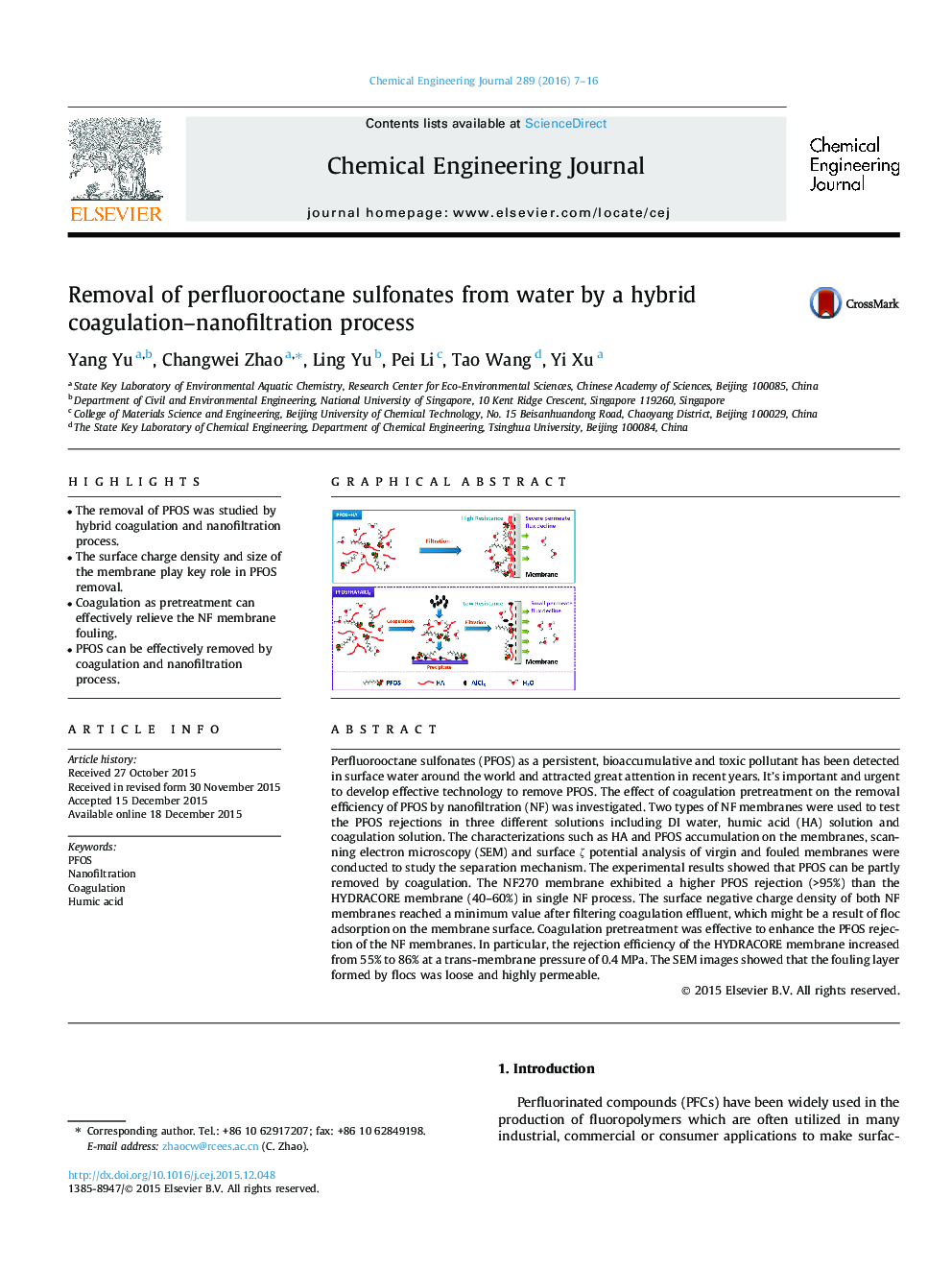| کد مقاله | کد نشریه | سال انتشار | مقاله انگلیسی | نسخه تمام متن |
|---|---|---|---|---|
| 145805 | 456352 | 2016 | 10 صفحه PDF | دانلود رایگان |

• The removal of PFOS was studied by hybrid coagulation and nanofiltration process.
• The surface charge density and size of the membrane play key role in PFOS removal.
• Coagulation as pretreatment can effectively relieve the NF membrane fouling.
• PFOS can be effectively removed by coagulation and nanofiltration process.
Perfluorooctane sulfonates (PFOS) as a persistent, bioaccumulative and toxic pollutant has been detected in surface water around the world and attracted great attention in recent years. It’s important and urgent to develop effective technology to remove PFOS. The effect of coagulation pretreatment on the removal efficiency of PFOS by nanofiltration (NF) was investigated. Two types of NF membranes were used to test the PFOS rejections in three different solutions including DI water, humic acid (HA) solution and coagulation solution. The characterizations such as HA and PFOS accumulation on the membranes, scanning electron microscopy (SEM) and surface ζ potential analysis of virgin and fouled membranes were conducted to study the separation mechanism. The experimental results showed that PFOS can be partly removed by coagulation. The NF270 membrane exhibited a higher PFOS rejection (>95%) than the HYDRACORE membrane (40–60%) in single NF process. The surface negative charge density of both NF membranes reached a minimum value after filtering coagulation effluent, which might be a result of floc adsorption on the membrane surface. Coagulation pretreatment was effective to enhance the PFOS rejection of the NF membranes. In particular, the rejection efficiency of the HYDRACORE membrane increased from 55% to 86% at a trans-membrane pressure of 0.4 MPa. The SEM images showed that the fouling layer formed by flocs was loose and highly permeable.
Figure optionsDownload as PowerPoint slide
Journal: Chemical Engineering Journal - Volume 289, 1 April 2016, Pages 7–16